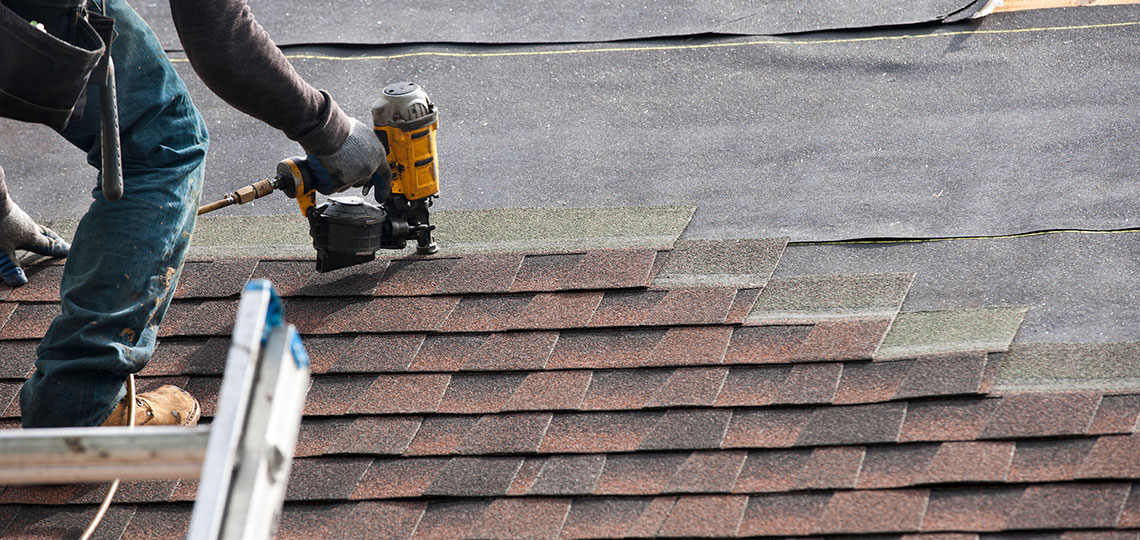Ideal Practices for Ensuring Correct Roof Air Flow
A balanced consumption and exhaust air vent proportion, typically 1:300, plays a pivotal duty, with consumption vents preferably positioned at the lower edge of the roofing system for great air entrance and exhaust vents at the height for warm air departure. Keeping insulation away from vents is crucial to avoid air flow constraint.
Understand Air Flow Essentials
Effectively recognizing ventilation fundamentals is necessary for making certain the durability and effectiveness of roof systems. Reliable air flow alleviates wetness accumulation and temperature extremes in the attic, both of which can cause considerable structural damage in time. A well-ventilated roof assists in stopping typical issues such as mold development, wood rot, and ice dams, which can endanger the stability of the roofing products and the underlying structures.
The primary objective of air flow is to assist in the activity of air, permitting for a constant exchange between the indoor and exterior atmospheres. This equilibrium is accomplished with a combination of intake and exhaust vents that collaborate to preserve ideal airflow. Consumption vents, commonly situated along the soffits or eaves, permit fresh air to get in the attic room area, while exhaust vents, commonly situated at or near the roof ridge, enable warm, moist air to run away.
Trick variables affecting the performance of roof covering air flow include appropriate placement, ample sizing, and making sure that both consumption and exhaust vents are unhampered. Normal assessment and maintenance are vital to identify prospective clogs, damage, or inefficiencies in the ventilation system, thus safeguarding the roof covering's performance and resilience.
Types of Roofing Vents
Roofing vents play a critical function in preserving reliable attic ventilation and, by extension, the general health of the roof. Various kinds of roof vents are available, each with distinct benefits customized to details roof demands. Ridge vents, as an example, are mounted along the roofing's top, permitting warm, damp air to run away from the attic room. They supply continual ventilation and blend seamlessly with the roofline, making them both reliable and visually pleasing.

Soffit vents are set up under the eaves and operate in tandem with roof vents to make certain a well balanced consumption and exhaust system. By permitting cooler air to enter from below, soffit vents help with the expulsion of warm air with upper vents. Gable vents, located on the outside wall surfaces of the attic, offer an additional reliable service, specifically in homes with saddleback roofs.
Examine Your Current Ventilation

Next, consider the age and condition of your roof covering materials and air flow components. Older systems might not adhere to existing building ordinance or may have weakened with time, decreasing their efficiency. Conduct a complete examination to identify click here to read any indications of deterioration, such as corrosion, damages, or gaps that can endanger the system's performance.
In addition, determine the attic temperature and humidity degrees. High temperatures and Go Here humidity can show inadequate ventilation.
Installment Best Practices
Effective installment of roof covering ventilation systems is vital for making certain ideal efficiency and durability. Proper installment begins with recognizing the specific air flow needs of the roof and the structure it covers. This includes computing the correct ratio of consumption to exhaust vents, usually sticking to the 1:300 regulation, which stipulates one square foot of air flow for each 300 square feet of attic floor area.

Intake vents should be installed at the roofing's reduced side, often in the soffits, to allow awesome air to go into. Exhaust vents, on the other hand, need to be mounted near or at the roof's height to help with the exit of cozy, moist air.
Seal all air vent links carefully to stop air leaks and possible water seepage. Usage premium products and adhere to supplier guidelines to make sure resilience and performance. In addition, integrating ridge vents with baffles can significantly improve airflow effectiveness by preventing wind-driven rain and snow from going into the attic room.
Eventually, specific installment of roofing air flow systems alleviates potential problems such as mold and mildew growth, ice dams, and architectural damages, guaranteeing the roofing system's stability and the structure's general wellness.
Regular Upkeep Tips
Consistency in maintenance practices is fundamental to guaranteeing the lasting effectiveness of roof covering air flow systems. Normal inspections are essential, ideally executed biannually-- in the spring and autumn. During these inspections, guarantee that vents are complimentary of debris, nests, and other obstructions that might hamper air movement. Examine for any type of indications of moisture buildup or mold and mildew, as these can show improper air flow or leakages (roofing companies).
Use a soft brush or a vacuum cleaner to get have a peek at this site rid of dust and debris from intake and exhaust vents. Be careful not to harm the vent screens or louvers during the procedure.
Appropriate insulation is equally vital. Make sure that attic room insulation does not obstruct the vents, as this can seriously restrict airflow. Rearrange or change it to maintain a reliable obstacle. if any type of insulation has changed or cleared up.
Lastly, replace any damaged or missing out on elements immediately. Broken vents, fractured tiles, or worn-out blinking can all add to inadequate ventilation and must be addressed immediately. Normal maintenance guarantees that the roof covering air flow system functions efficiently, consequently expanding the life expectancy of the roofing itself.
Final Thought
Making certain correct roof covering air flow is extremely important for preserving the efficiency and durability of a roof. Adherence to the 1:300 intake and exhaust vent ratio, combined with the calculated positioning of vents, is important. Normal semiannual inspections, debris cleansing, and making sure insulation does not obstruct airflow are important methods. Carrying out these best practices will certainly promote a well-ventilated roof system, thereby mitigating potential concerns associated with moisture buildup and too much warm, inevitably prolonging the roofing's life-span.
A well balanced consumption and exhaust air vent proportion, typically 1:300, plays an essential duty, with intake vents preferably placed at the reduced side of the roofing system for trendy air entry and exhaust vents at the optimal for warm air leave. Intake vents, usually situated along the eaves or soffits, allow fresh air to enter the attic room space, while exhaust vents, commonly located at or near the roofing system ridge, allow warm, moist air to escape.
Soffit vents are installed under the eaves and job in tandem with roofing system vents to ensure a balanced intake and exhaust system. By allowing cooler air to get in from below, soffit vents assist in the expulsion of hot air with upper vents. Adherence to the 1:300 consumption and exhaust vent ratio, combined with the critical placement of vents, is vital.